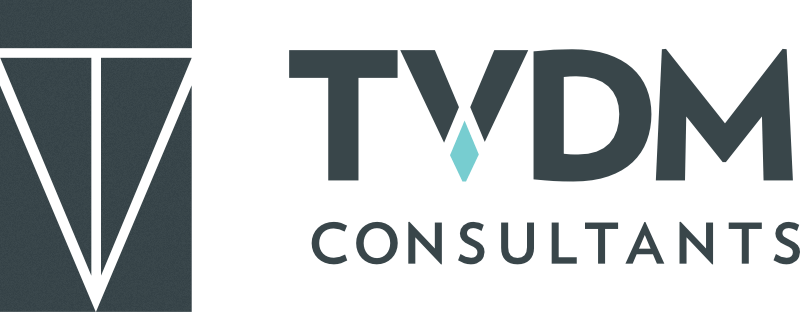Your guide to understanding levies
31 March 2023 | Marion Fogell
I have seen many discussions recently about both the “raising” of levies and their use, including a lot of misleading information.
I am the trustee responsible for finance in my fairly large scheme. We have recently made major changes to the way we budget for the administrative and reserve funds. In this regard, we will be putting forward a proposal to the forthcoming Annual General Meeting about a major improvement to common property. This means that I have had to do a lot of research about levies, including conversations with other sectional title champions, and it seems to be useful to put pen to paper in order to preserve the knowledge gained, and to inform others who may be struggling with these issues.
Raising levies
First of all, let’s sort out some terminology. When levies are raised, this means that they become due and payable for recovery; it does not necessarily mean that they are increased from the previous value.
Section 3 of the Sectional Titles Schemes Management Act 8 of 2011 (“STSMA”) lists the functions of bodies corporate. Subsections 1(a) and (b) indicate the bodies corporate responsibility to “establish and maintain” administrative and reserve funds, and subsections 1(c) and (f) further provide that a body corporate must “require the owners” to make contributions to these funds in proportion to their PQ. Section 3 continues by splitting levies into 2 types: 1. Those following the approval of the budget at the AGM and 2. Any other levy raised, which is defined as a special contribution.
Owner approval of the budget presented at the AGM gives the trustees authority to spend money in accordance with same, and implies the commitment of the owners to pay the levies required to fund these expenses.
Although the budget does not have to explicitly mention the levies, it is good practice for the notes to the budget to include a statement referencing them, for example, “If this budget is approved, it will require an increase of 8% in the administrative levies and 7% in the reserve levies with effect from 1 January 2023”.
Special contributions are divided into 2 types in Prescribed Management Rule (“PMR”) 21(3) of Annexure 1 to the Regulations of the STSMA, both to cover expenses that cannot reasonably be delayed until provided for in the budget presented and approved at the AGM:
Raising funds to meet a “necessary expense”. This is probably what most of us think of as a special levy and is usually for a single item (although it may be collected over an extended period of time or as a single lump sum payment), or
Increasing the contributions due by the members by a maximum of 10% at the end of a financial year to meet “increased liabilities” of the body corporate. This means that operational costs that cannot be deferred, such as municipal accounts, insurance, salaries of staff, and contracts with service providers.
All 3 types of levies are formally raised with a trustee resolution, and must be followed by a written notice to owners within 14 days, certifying the amounts to be paid, when these amounts will become due and payable and how they may dispute these amounts [STSMA 3(5) & PMR 25(1)].
While there is no requirement for the reason for a special levy to be spelled out, it is only courteous – and will maintain trust – if owners are given full details of the necessary expense(s) and why they cannot be deferred.
Since the body corporate must have administrative and reserve funds, the trustee resolution and notice to owners should clearly indicate which levies will be paid into which fund. PMR 24(3) specifies what amounts must be paid into the reserve fund, which implies that anything that is not on this list will be paid into the administrative fund.
Unless and until they are notified of a change, members are liable for contributions in the same amounts and payable in the same instalments as were due and payable by them during the past financial year.
Owners portion of liability for levies
Section 11(2)(a) and (b) of the STSMA indicates that the liability to pay levies by PQ may only be varied by the developer when opening the sectional title register OR by the members by special resolution AND with the written consent of any owner adversely affected.
Since members, whose levies will increase as a result of a change in calculation methodology, for example, to an equal split per section, are unlikely to consent, it is very unusual for any change from raising levies by PQ to be legally made once the scheme is established.
Use of funds
PMR 24 clearly states that the administrative fund must be used to fund the operating expenses of the body corporate.
This rule continues to describe what the reserve fund may be used for – essentially this is anything that is on the MR&R plan, and a number of other urgent maintenance, repair, or replacement expense items that probably should have been in the MR&R plan. This includes critical infrastructure that has failed (e.g. safety equipment or lift mechanisms).
It should be clear that “operational expenses” – however urgent – do not qualify, and therefore may not be funded from the reserve fund. If the funds in the administrative fund are not sufficient for the purpose (e.g. to pay an overdue municipal account), a special levy will have to be raised or the body corporate will have to take out a loan.
I believe that the tight restrictions of PMR 24(2), (5) and (6) imply that money may not be transferred out of the reserve fund for any reason, except those specified. If a scheme is lucky enough to have a surplus in the reserve fund, then they may reduce the levies, or specify that new income is put in a separate “savings” fund until it is needed.
Funding improvements to common property
PMR 29 specifies the process for approving improvements to common property, which include presenting the details of the improvement, its cost and how it is to be funded to owners, who must approve all aspects of the proposal.
It is my opinion that since an improvement to common property cannot – by definition – be urgent, and it will probably be implemented “following the approval of the budget at the annual general meeting”, any levy raised for this purpose is not a special levy.
It is further to my opinion that since an improvement to common property is neither an operational expense nor a maintenance, repair, or replacement item then it may not be funded by either the administrative fund or the reserve fund. It therefore appears necessary, in my opinion for a completely separate fund to be created for one or more improvements to common property.
Some schemes have a “savings” fund that dates back to pre-2016; if you are not one of these then there are several ways that surplus body corporate income may be added to such a fund:
I believe that if there are savings in operating expenses in a previous year and therefore a surplus in the administration fund then this may be transferred;
Rental, interest or “other” income may be used;
Since such a “savings fund” is not subject to the restrictions in the STSMA and PMR 24, it is critical that good governance is maintained. The majority of the owners should make decisions over the use of this fund by including it in the budget presented for approval at the AGM each year.
Should a special resolution be tabled approving a reasonably necessary improvement to common property, it should also include a budget and/or directions to the trustees that will ensure that income and expenses are aligned and documented. A unanimous resolution, required to approve any not reasonably necessary improvements to common property should be treated the same.
CSOS levies
There seems to be much confusion on the levies that should be included in the CSOS levy calculation.
CSOS issued a Practice Directive in May 2022* which expanded and clarified on a previous one issued in March 2017. Section 6.3 of this Practice Directive clearly states that the CSOS levy is calculated on the administrative levy and excludes reserve levies payable; section 6.5 further states that special levies and EUA levies are excluded.
However, the directive goes on to state (section 6.6) that schemes may not split the administration fund levies up in order to avoid CSOS levies – so schemes that separate operational expenses into, for example, a security levy; water levy; electricity levy etc. should calculate the CSOS levy on the total of these amounts.
* https://csos.org.za/wp-content/uploads/2022/05/Singed-Practice-Directive-on-payment-of-Levies.pdf
Conclusion
I hope that this clarifies many of the misunderstandings that you may have about the collection and use of levies, in your scheme and that you find it useful, these are based on my experiences as a trustee in my scheme and would welcome any comments or questions.
Please contact us at TVDM Consultants at info@tvdmconsultants.com or 061 536 3138 if you would like more information, or if you have any questions on the article above. If you have not already done so, click here to sign up to our newsletter.
About the Author:
Marion Fogell is a trustee at her scheme.


